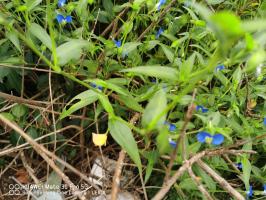How to Plant Mango Tree in the Philippines
The Philippines is known for its delicious and juicy mangoes, which are enjoyed by people all over the world. If you are planning to start your own mango plantation in the Philippines, you need to learn the basics of planting and caring for mango trees. Here is a step-by-step guide on how to plant a mango tree:
1. Choose the Right Variety of Mango
The first step in planting a mango tree is choosing the right variety. There are many different types of mangoes grown in the Philippines, each with its own distinctive taste, texture, and appearance. Some of the most popular varieties include Carabao, Pico, and Indian Mango. Choose a variety that suits your taste and climate, and make sure it is disease-resistant and can withstand drought.
2. Select a Suitable Site
Mango trees require well-draining soil, good air circulation, and plenty of sunlight to thrive. Select a site that has fertile, loamy soil that is rich in organic matter. The site should also be away from other trees or buildings that can block sunlight or impede air circulation. Make sure the site has good drainage, as mango trees do not like wet feet.
3. Prepare the Soil
Once you have selected a suitable site, prepare the soil by removing any weeds or grass from the area. Dig a hole that is twice the size of the root ball of your mango tree. Mix in compost or organic matter into the soil to improve its fertility and texture.
4. Plant the Mango Tree
Place the mango tree in the center of the hole, making sure the top of the root ball is level with the ground. Fill in the hole with soil, pressing it firmly around the root ball. Water the mango tree thoroughly to settle the soil and remove any air pockets.
5. Mulch and Water Regularly
After planting the mango tree, mulch the area around the tree to help retain moisture and suppress weeds. Use organic mulch, such as wood chips or shredded leaves, and apply a layer that is 3-4 inches thick. Water the mango tree regularly, keeping the soil consistently moist but not waterlogged.
6. Prune and Fertilize
Once the mango tree has established itself and started to grow, you need to prune and fertilize it regularly. Prune the tree during the dormant season to remove any dead or diseased branches and to promote new growth. Apply fertilizer twice a year, in the spring and fall, using a balanced fertilizer that is high in nitrogen, phosphorus, and potassium.
7. Protect from Pests and Diseases
Mango trees in the Philippines are susceptible to various pests and diseases, such as fruit flies, mango leafhoppers, and anthracnose. To prevent these problems, use insecticides and fungicides as needed, and practice good sanitation by removing any fallen fruit or leaves. Keep the area around the mango tree clean and free of debris.
Planting a mango tree in the Philippines requires some effort and attention, but the rewards are worth it. With proper care and management, your mango tree can provide you with sweet and juicy fruit for many years to come.

 how many times do yo...
how many times do yo... how many planted tre...
how many planted tre... how many pine trees ...
how many pine trees ... how many pecan trees...
how many pecan trees... how many plants comp...
how many plants comp... how many plants can ...
how many plants can ... how many plants and ...
how many plants and ... how many pepper plan...
how many pepper plan...





























